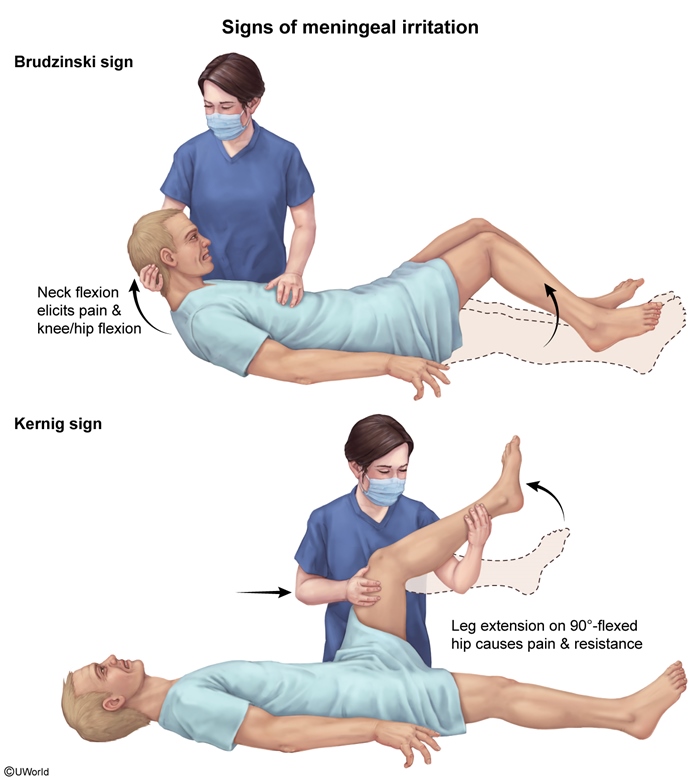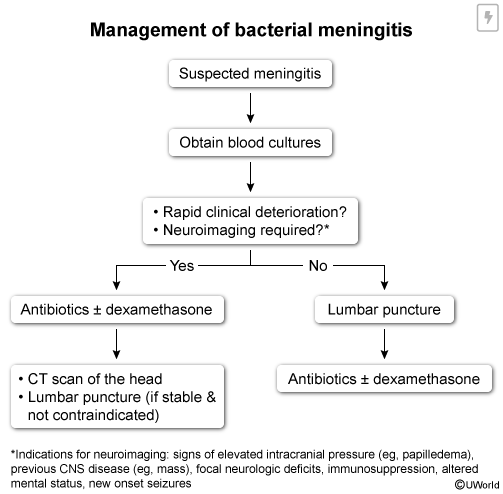Bacterial Meningitis (Age >1 Month)
Article Sections
Introduction
Bacterial meningitis is a bacterial infection and inflammation of the protective covering surrounding the brain and spinal cord (eg, meningitis).
Pathophysiology
Bacterial meningitis occurs when bacteria colonize mucosa and enter the bloodstream. Specific virulence factors allow the bacteria to evade typical immune defenses and cross the blood-brain barrier, reaching the cerebrospinal fluid (CSF) and meninges. Once in the CSF, bacteria can replicate rapidly due to low immune defenses, which leads to increased inflammation in the meninges with a subsequent influx of white cells.
Epidemiology and risk factors
The incidence of bacterial meningitis varies by age, with the highest rates observed in infants and young children. Other risk factors that increase the risk of developing bacterial meningitis include immunodeficiency, recent exposure to infection, or trauma to the meninges.
Continue Learning with UWorld
Get the full Bacterial Meningitis (Age >1 Month) article plus rich visuals, real-world cases, and in-depth insights from medical experts, all available through the UWorld Medical Library.
Figures

